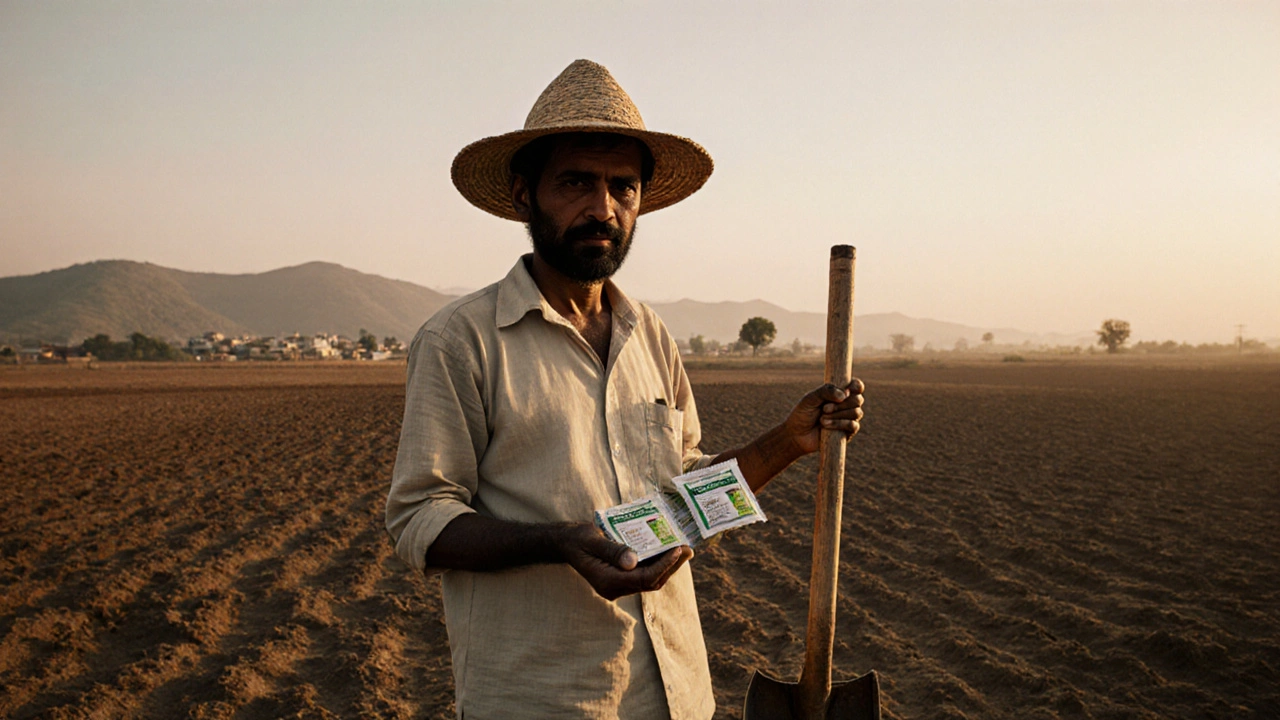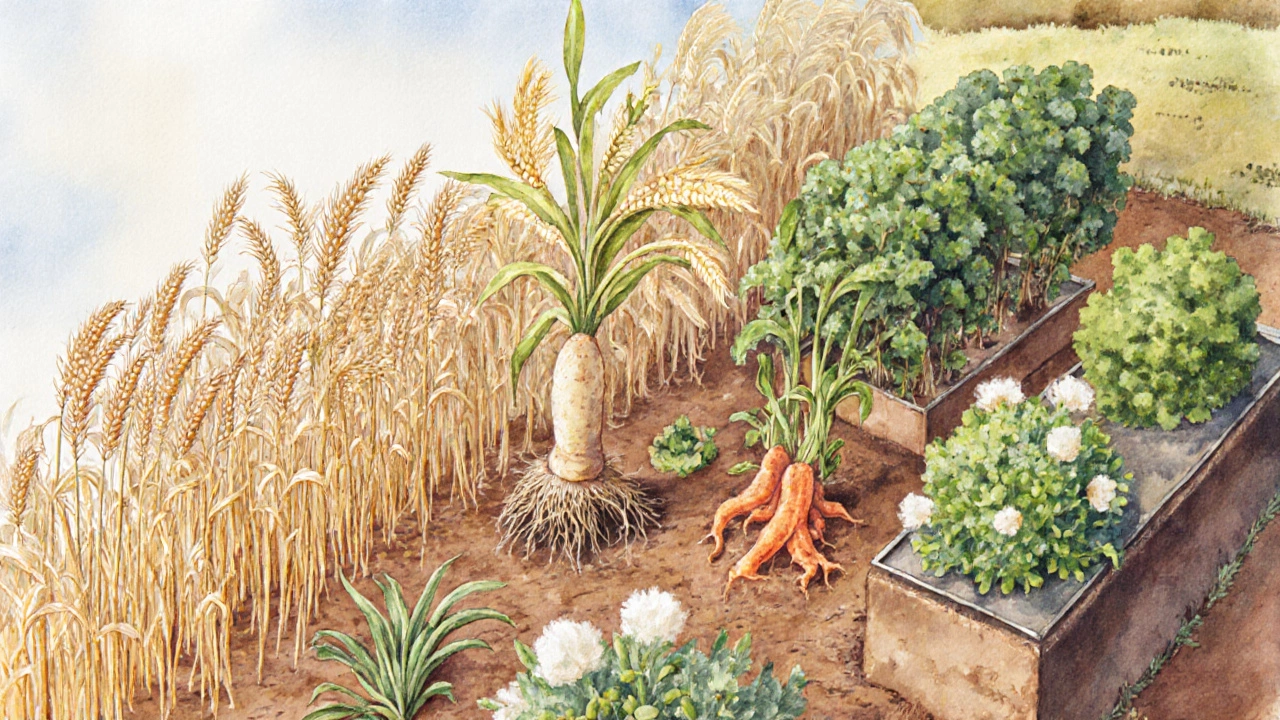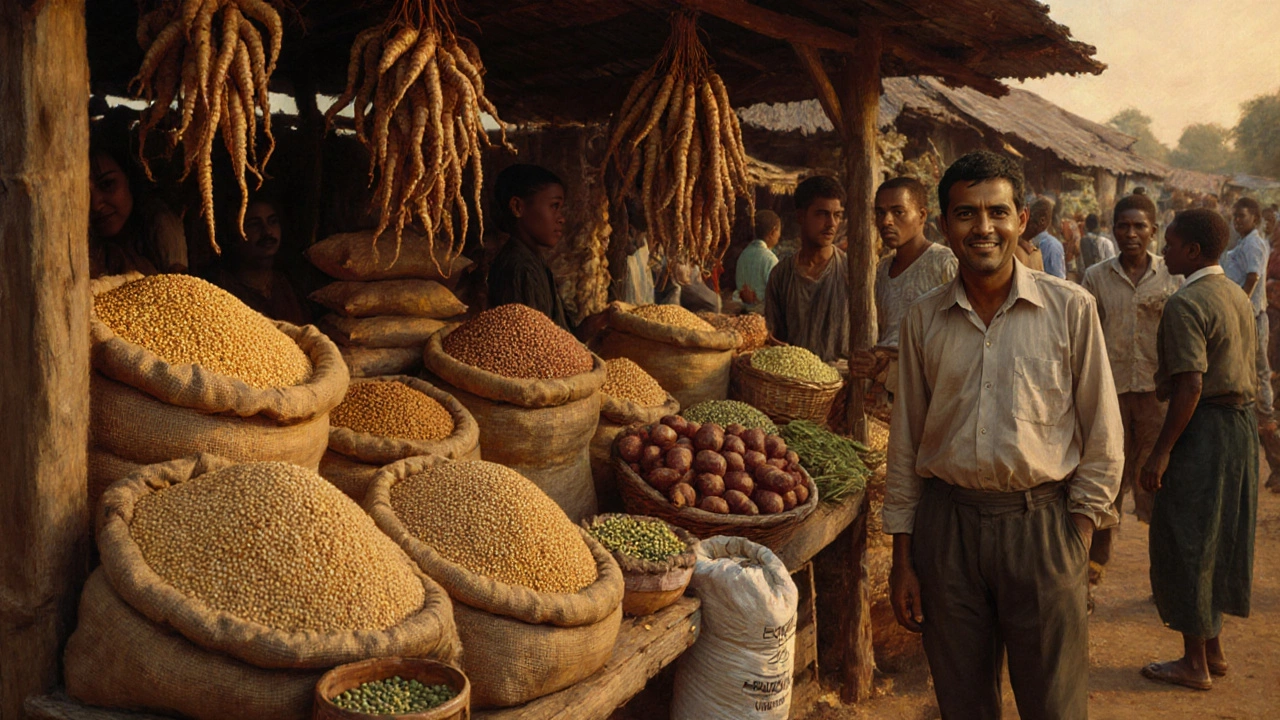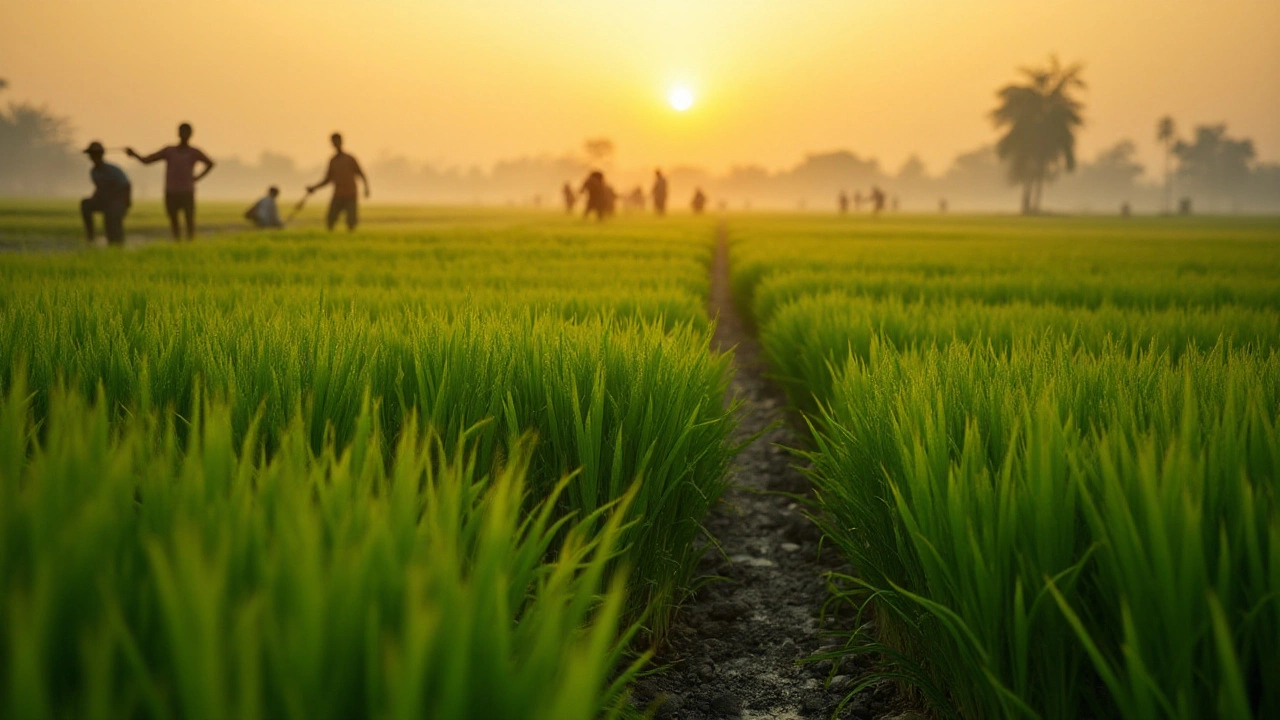What Is the Poor Man's Crop? A Straightforward Guide

Poor Man's Crop Selector
Choose Your Growing Conditions
Imagine you have just a few pounds to spend on seeds, little access to fertilizer, and a piece of land that can’t afford fancy irrigation. What can you grow that’ll fill your table, bring in some cash, and stay resilient against weather? That’s the heart of the "poor man’s crop" - a low‑cost, high‑yield plant that thrives on minimal inputs.
Defining the Poor Man’s Crop
When you hear the phrase Poor Man's Crop is a crop that delivers a lot of food or income for very little investment in seeds, water, and fertilizer, think of a farmer’s safety net. It’s not a fancy boutique variety; it’s the workhorse that can survive on marginal soils, limited water, and modest labor.
The term poor man's crop has been used for centuries in regions where food security depends on just a few dependable plants.
Top Crops Usually Called Poor Man’s Crops
Below are six crops that regularly earn the “poor man’s” label. Each entry includes a brief definition with microdata so search engines can recognize them.
- Millet is a small‑seeded cereal that tolerates drought and poor soils, producing 1.5-2.5tonnes per hectare with minimal fertilizer.
- Sorghum is a warm‑season grain that thrives in arid climates, yielding up to 3tonnes per hectare while needing little water.
- Cassava is a root crop that can survive on as little as 500mm of rainfall, delivering 10‑30tonnes per hectare in suitable soils.
- Sweet Potato is a tuber that grows quickly, tolerates poor soils, and offers high calorie content with yields of 8-12tonnes per hectare.
- Pigeon Pea is a legume that fixes nitrogen, enriching the soil while producing 1.2‑1.8tonnes of beans per hectare.
- Quinoa is a pseudo‑cereal noted for its protein quality, able to grow at high altitudes and on marginal soils, yielding 1‑2tonnes per hectare.

Side‑by‑Side Comparison
| Crop | Typical Yield (t/ha) | Water Needs (mm/yr) | Growing Season | Key Nutrient | Market Price (USD/tonne) |
|---|---|---|---|---|---|
| Millet | 1.5‑2.5 | 300‑500 | 90‑120 days | Carbohydrates, Iron | 180‑220 |
| Sorghum | 2‑3 | 350‑600 | 100‑130 days | Fiber, Protein | 150‑200 |
| Cassava | 10‑30 | 500‑800 | 240‑300 days | Carbohydrates (starch) | 90‑130 |
| Sweet Potato | 8‑12 | 400‑600 | 120‑150 days | Beta‑carotene, VitaminC | 120‑170 |
| Pigeon Pea | 1.2‑1.8 | 350‑550 | 120‑150 days | Protein, Nitrogen‑fixing | 250‑300 |
| Quinoa | 1‑2 | 300‑500 | 120‑150 days | Complete protein, Minerals | 800‑1,200 |
How to Grow a Poor Man’s Crop on a Shoestring Budget
- Choose the Right Crop for Your Climate - Use the table above to match rainfall and soil type. In semi‑arid zones, millet or sorghum usually shine; in wetter lowlands, cassava or sweet potato perform well.
- Source Low‑Cost Seed - Look for community seed banks, farmer cooperatives, or even saved seeds from previous harvests. Many NGOs distribute free millet or sorghum seeds in developing regions.
- Prepare the Soil with Minimal Inputs - A simple plow or hand hoe to break compacted layers, followed by a thin layer of locally available organic matter (e.g., kitchen waste, animal manure). For legumes like pigeon pea, the nitrogen‑fixing ability reduces the need for extra fertilizer.
- Practice Conservation Planting - Use ridges or contour rows to capture rainwater, especially for crops like cassava that need moisture early on.
- Water Wisely - If irrigation is possible, apply water early in the season and then let rains take over. Drip irrigation can be built from recycled bottles for less than £5.
- Control Weeds Manually - Hand weeding is labor‑intensive but cheaper than herbicides. Mulching with straw cuts down on weed growth while preserving soil moisture.
- Harvest at the Right Time - Over‑ripe grains can lose quality; root crops like cassava should be dug when the stems start to turn yellow.

Nutrition and Market Value: Why These Crops Matter
Beyond cheap production, many of these crops tackle malnutrition:
- Millet and sorghum are rich in iron and B‑vitamins, helping combat anemia.
- Cassava supplies calories but is low in protein; pairing it with pigeon pea balances the diet.
- Sweet potato’s beta‑carotene converts to vitaminA, essential for eye health.
- Quinoa offers a complete protein profile, making it a premium niche crop when you can access higher‑price markets.
From a cash perspective, the table shows market prices. Even the lower‑priced crops can generate profit if you sell in bulk or to local processors. Adding value-like turning cassava into flour-boosts earnings without much extra cost.
Common Mistakes to Avoid
- Planting Too Densely - Overcrowding reduces airflow, inviting disease, and cuts yields.
- Skipping Soil Tests - Even low‑input farms benefit from a simple pH test; extreme acidity can lower yields dramatically.
- Relying on a Single Crop - Diversify with at least two species (e.g., millet plus pigeon pea) to spread risk.
- Ignoring Post‑Harvest Handling - Proper drying of grains prevents mold, which can ruin entire batches.
Frequently Asked Questions
What makes a crop qualify as a "poor man’s crop"?
A "poor man’s crop" is defined by three main traits: low seed cost, minimal water and fertilizer needs, and the ability to produce a high yield on marginal soils. These crops are usually hardy, drought‑tolerant, and can be grown with basic tools.
Can I grow millet and sorghum together?
Yes. Planting millet as a catch‑crop between sorghum rows can improve ground cover, reduce erosion, and increase overall biomass. Just keep spacing adequate to avoid competition for sunlight.
How much does a kilogram of cassava cost to process into flour?
Processing cassava into flour typically adds about $0.10‑$0.15 per kilogram for peeling, drying, and grinding. The added value can raise the final selling price to $0.30‑$0.40 per kilogram, depending on local demand.
Is pigeon pea safe to plant without chemical fertilizers?
Absolutely. Pigeon pea belongs to the legume family and fixes atmospheric nitrogen through root nodules. In most soils, it supplies enough nitrogen for itself and can leave residual benefits for the next crop.
What’s the shortest growing season among the crops listed?
Millet and sorghum often mature in 90‑120 days, making them the quickest grain options. Sweet potato can also be ready in about 120 days, depending on variety and climate.





